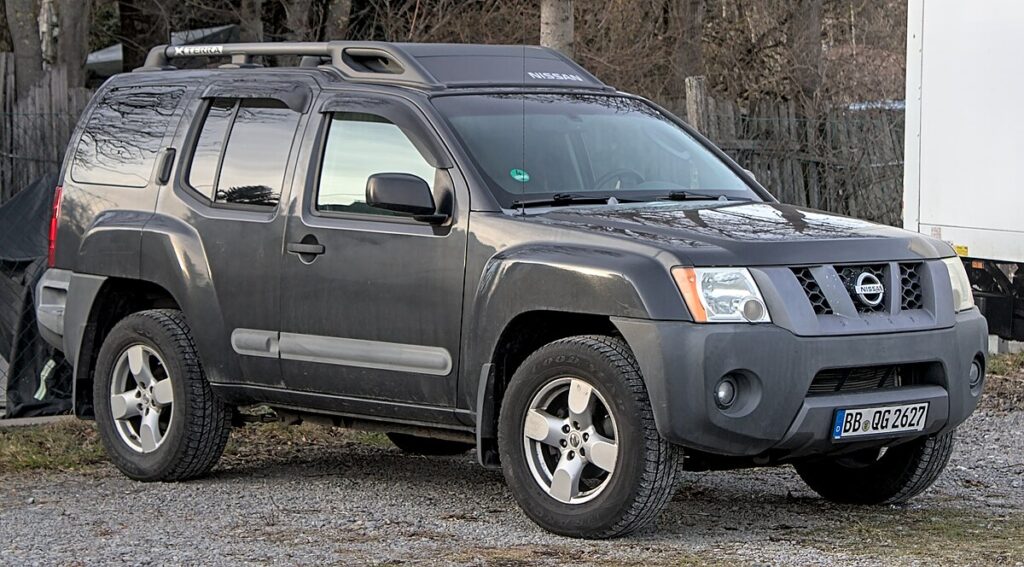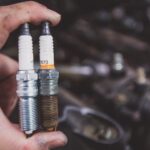
Nissan Xterra: Common Problems, Symptoms & Best Fixes (Comprehensive Guide)

The Nissan Xterra has long been prized by off-road lovers and daily drivers alike for its rugged build and adventurous spirit. But with age and mileage, certain recurring issues tend to surface—especially in the first and second generations. In the sections below, we (as your trusted technical guides) dissect each major problem, explain how to diagnose it, and recommend smart repair strategies.
- 1. Faulty Fuel Level Sensor & False Gauge Readings
- 2. Radiator Leaks & “Milkshake” Transmission Contamination (SMOD)
- 3. Transmission & Drivetrain Failures
- 4. Timing Chain / Guide & Tensioner Wear (Second Generation)
- 5. Fuel Injector / Misfire Issues
- 6. EGR Valve & Carbon Deposits (Older Models)
- 7. Miscellaneous But Frequent Issues
- Model Year Vulnerabilities & What to Watch
- Preventive Maintenance & Best Practices
- Conclusion
1. Faulty Fuel Level Sensor & False Gauge Readings
Symptoms
- Fuel gauge jumps erratically
- Shows “Full” nearly immediately after filling
- Gauges stick or lag
- “Low fuel” warning even with fuel remaining
Root Causes
- Worn float assembly
- Corrosion on the sensor arm
- Wiring harness damage or loose connectors
- Internal sensor drift or aging
Recommended Fix
Replacing the fuel sending unit inside the fuel tank is usually the definitive fix. Use OEM parts (or high-quality aftermarket) and ensure you seal the tank properly. Inspect and replace any damaged wiring or connectors. This issue is especially common in 2001–2011 Xterra models.
2. Radiator Leaks & “Milkshake” Transmission Contamination (SMOD)
Symptoms
- Pink, creamy fluid in transmission pan (“strawberry milkshake”)
- Transmission slipping, hesitation
- Overheating
- Coolant level dropping
Mechanism & Vulnerable Years
In certain 2004–2008 Xterra models, coolant can leak from the lower intake manifold or radiators into the automatic transmission fluid — contaminating it and causing failure. This notorious issue is sometimes called “SMOD”.
Model years like 2005 and 2007 are particularly vulnerable.
 Nissan Xterra Airbag Light Flashing: Causes, Diagnosis, and Reset Guide
Nissan Xterra Airbag Light Flashing: Causes, Diagnosis, and Reset GuideDiagnostic Steps
- Inspect transmission fluid: if milk-colored, contamination is present.
- Pressure test radiator and cooling system under load.
- Inspect intake manifold gaskets, coolant lines, and associated seals.
Best Repair Strategy
- Replace or upgrade radiator and lower intake manifold gaskets.
- Flush and rebuild the transmission if contaminated.
- Add an external transmission cooler to help reduce pressure/heat.
- Use correct coolant type and maintain proper pressure in cooling system.
3. Transmission & Drivetrain Failures
Symptoms
- Delayed shifts or hesitations
- Slipping or harsh shifting
- Loud or unusual transmission noises
- Loss of power under load
Common Causes
- Contaminated fluid due to radiator leak (see above)
- Worn clutch packs or friction plates (in automatic transmissions)
- Solenoid, valve body, or internal hydraulic issues
- Low or degraded fluid levels
- Excessive heat or stress from towing/off-road use
Preventive & Corrective Steps
- Regular transmission fluid and filter changes (every 30,000 miles or per severe duty).
- Use OEM fluid or high-quality equivalent with correct spec.
- Inspect and replace solenoids, valve body or gasket rubbers as needed.
- For cross-contamination, perform a full rebuild if fluid is milk-colored.
- Install an auxiliary transmission cooler to reduce heat buildup.
4. Timing Chain / Guide & Tensioner Wear (Second Generation)
Symptoms
- Rattling, knocking, or ticking noise at start or idle
- Poor throttle response or power loss
- Misfires or rough running
- Code(s) like cam or crank position sensor faults
Context & Vulnerability
The 2005–2015 Xterra uses timing chains (rather than a belt), but the secondary timing chain guides, tensioners, and associated hardware are prone to wear.
Recommended Remediation
- Replace worn chain guides, tensioners, and rails (OEM preferred).
- While doing that, inspect camshafts, crank sprockets, and chain for stretch.
- Use high-quality engine oil and change it frequently to reduce premature wear.
- If noise persists, evaluate timing chain alignment and replace damaged parts promptly.
5. Fuel Injector / Misfire Issues
Symptoms
- Rough idle or stalling
- Hesitation or jerking under acceleration
- Check engine light illuminated with codes like P030x
- Poor fuel economy
Causes & Contributing Factors
- Injector clogs or deposits from low-quality fuel
- Electrical connector corrosion or poor contact
- Injector internal failure or partial opening
- Carbon buildup on intake ports
Diagnosis & Repair
- Use a scan tool or oscilloscope to test injector waveform/current.
- Clean or ultrasonically service injectors, or replace with OEM/quality units.
- Check wiring, connectors, and harnesses for corrosion or damage.
- Consider fuel system additives or periodic cleaning to prevent recurrence.
6. EGR Valve & Carbon Deposits (Older Models)
Symptoms
- Rough shifting under load
- Loss of power during acceleration
- Check engine light with codes like P040x
- Excess exhaust smoke or knock
Causes
- Excess carbon buildup clogging EGR passages
- Valve sticking or failing to operate
- Intake manifold carbon sludge
Recommended Fix
- Remove and clean EGR valve and passages using proper solvents.
- If severely clogged or failed, replace the EGR valve with OEM spec.
- Periodically clean intake manifold and ports to prevent carbon accumulation.
7. Miscellaneous But Frequent Issues
Engine Mounts & Vibration
Xterra owners often report failing engine mounts (especially at higher mileage), causing vibration and movement under torque. Reinforced aftermarket mounts exist as durable replacements.
Suspension & Strut Wear
After 70,000+ miles, rear shocks/struts, bushings, and sway bar links often need replacement.
You may be interested in reading Nissan Xterra Airbag Light Flashing: Causes, Diagnosis, and Reset Guide
Nissan Xterra Airbag Light Flashing: Causes, Diagnosis, and Reset Guide Nissan Xterra No Power When Accelerating — Complete Diagnostic and Fix Guide
Nissan Xterra No Power When Accelerating — Complete Diagnostic and Fix GuideEVAP / Purge Solenoid Faults
Aging purge control valves or EVAP system leaks may trigger check engine lights and driveability issues; these are relatively inexpensive to replace.
Fuel Filler Cap
Some owners have replaced the filler cap multiple times due to sealing or sensor issues in the EVAP system.
Interior & Minor Electrical Failures
- Rear cup holders, switchgear, door latches, or interior trim may degrade over time.
- Steering wheel emblem recall (2008–2011 Xterra): loose emblem can detach during airbag deployment.
Model Year Vulnerabilities & What to Watch
| Model Year Range | Most Common Issues | Notes & Severity |
|---|---|---|
| 2001–2003 (1st gen) | Fuel gauge sensor, timing belt replacement, basic wear | Early models used timing belt (requires replacement at interval) |
| 2004–2008 (2nd gen early) | Radiator leaks → coolant in transmission, SMOD, timing chain guides, fuel sensor | Among the most problematic years. |
| 2009+ | Many inherent design issues mitigated | Owners report better reliability; 2009 is often seen as the “refresh” year. |
| 2013–2015 | Mild wear, routine maintenance | Lower incidence of major failures. |
Preventive Maintenance & Best Practices
- Frequent Fluid Checks & Changes
Use OEM spec oils, coolant, transmission fluid, and differential fluid. Change more often under off-road or towing use. - Add External Cooling & Filtration
Especially for older Xterras, an auxiliary transmission cooler or upgraded radiator helps reduce stress. - Timely Replacement of Wear Components
Monitor and replace chains, guides, injectors, mounts, and seals as they age. - Address Minor Symptoms Early
A small rattle or hesitation may forewarn a major problem if ignored. - Use Quality Parts & OEM Equivalents
Many failures originate from cheaper aftermarket parts; stick to trusted brands.
Conclusion
The Nissan Xterra remains a beloved and rugged SUV—but it’s not without its Achilles’ heels. The fuel level sensor, radiator leaks that contaminate the transmission, timing chain guide wear, and injector issues represent the lion’s share of headaches. Still, with rigorous maintenance, prompt intervention, and high-quality parts, many of these ailments can be managed or avoided entirely. Choose later model years (2009 and later) when possible, and always inspect cooling and drivetrain systems thoroughly when buying used.
You may be interested in reading Nissan Xterra Airbag Light Flashing: Causes, Diagnosis, and Reset Guide
Nissan Xterra Airbag Light Flashing: Causes, Diagnosis, and Reset Guide Nissan Xterra No Power When Accelerating — Complete Diagnostic and Fix Guide
Nissan Xterra No Power When Accelerating — Complete Diagnostic and Fix Guide Nissan Xterra Won’t Start and Makes a Clicking Noise: Full Troubleshooting Guide
Nissan Xterra Won’t Start and Makes a Clicking Noise: Full Troubleshooting GuideIf you want to know other articles similar to Nissan Xterra: Common Problems, Symptoms & Best Fixes (Comprehensive Guide) you can visit the category Common Problems.
Deja una respuesta






More content of your interest